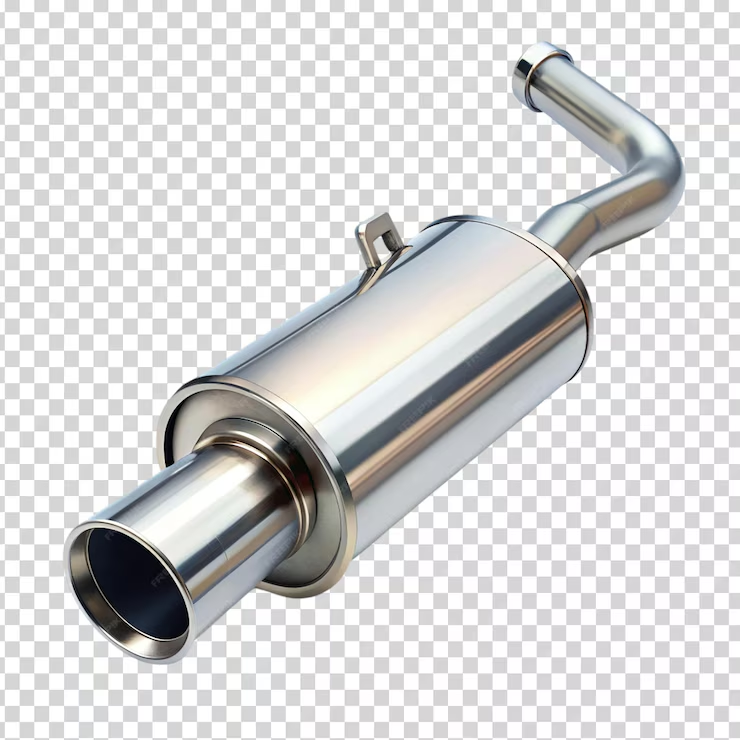Catless exhaust systems have become increasingly popular among automotive enthusiasts seeking to enhance their vehicle’s performance. Unlike traditional exhaust systems that include catalytic converters, catless systems remove these components, often resulting in increased horsepower, improved throttle response, and a more aggressive sound. However, while catless exhausts offer performance benefits, they also raise questions regarding legality, emissions, and environmental impact. This article will delve into what catless exhaust systems are, their advantages and disadvantages, and considerations for those contemplating this modification.
What is a Catless Exhaust System?
A catless exhaust system refers to an exhaust setup that completely bypasses the catalytic converter. Catalytic converters are crucial for reducing harmful emissions produced during the combustion process. However, they can also restrict exhaust flow, which may hinder engine performance. By removing the catalytic converter, a catless system allows for a freer flow of exhaust gases, enabling the engine to expel them more efficiently.
Types of Catless Exhaust Systems
- Full Catless Exhaust Systems: These systems eliminate both the front and rear catalytic converters, providing maximum flow and performance benefits.
- Downpipe Catless Systems: These setups specifically remove the catalytic converter located in the downpipe, which is part of the exhaust system that connects the engine to the rest of the exhaust.
- Catless Mid-Pipes: These are similar to downpipes but are located further down the exhaust system, providing additional freedom in exhaust flow while retaining some components of the original exhaust.
Advantages of Catless Exhaust Systems
Improved Performance
One of the primary reasons car enthusiasts opt for catless exhaust systems is the performance improvement they offer. By removing the catalytic converter, the exhaust flow becomes less restricted. This can lead to:
- Increased Horsepower: More efficient exhaust flow means that the engine can breathe better, resulting in increased horsepower. Many drivers report gains of 10-20 horsepower or more after installing a catless system.
- Enhanced Throttle Response: With less back pressure in the exhaust system, engines can respond more quickly to throttle inputs, making the vehicle feel more agile and responsive.
Aggressive Sound
Another appealing aspect of catless exhaust systems is the sound they produce. Without the catalytic converter, exhaust gases can exit the system more freely, leading to a louder and more aggressive exhaust note. This can enhance the driving experience for many enthusiasts who appreciate a more pronounced engine sound.
Weight Reduction
Catless systems can also contribute to weight savings. Catalytic converters can be heavy, and removing them can reduce the overall weight of the vehicle, potentially improving handling and performance.
Cost-Effectiveness
While catless exhaust systems can be a significant investment, they may also be more cost-effective in the long run. By eliminating the catalytic converter, drivers can reduce maintenance costs associated with replacing or repairing these components, which can fail over time.
Disadvantages of Catless Exhaust Systems
Legal Issues
One of the most significant drawbacks of catless exhaust systems is the potential legal ramifications. In many regions, removing the catalytic converter is illegal due to emissions regulations. Vehicles must meet specific emissions standards, and driving a car with a catless exhaust may lead to fines or issues during vehicle inspections.
Environmental Impact
By removing the catalytic converter, catless exhaust systems increase harmful emissions, contributing to air pollution. This can have a negative impact on the environment and public health. As awareness of environmental issues grows, many drivers are opting for solutions that balance performance with ecological responsibility.
Check Engine Light
Installing a catless exhaust system can trigger the check engine light (CEL) on modern vehicles. This is often due to the absence of the catalytic converter, which affects the vehicle’s onboard diagnostics. While some enthusiasts use tuning solutions to suppress the CEL, this can lead to further complications.
Noise Regulations
In addition to emissions regulations, many areas have noise ordinances that restrict the level of sound a vehicle can produce. A catless exhaust system can significantly increase noise levels, leading to potential conflicts with law enforcement or neighbors.
Legal Considerations for Catless Exhaust Systems
Emissions Regulations
Before installing a catless exhaust system, it’s essential to check local emissions regulations. In the United States, the Environmental Protection Agency (EPA) and various state agencies enforce strict emissions standards. Cars that do not meet these standards may be subject to fines, and drivers may be unable to register their vehicles.
State and Local Laws
Laws can vary significantly from one state or region to another. Some states have stringent emissions testing programs, while others may have more lenient regulations. Researching local laws can help drivers avoid potential legal issues down the road.
Track Use
For enthusiasts who primarily use their vehicles on the track, catless exhaust systems may be a viable option, as track regulations often differ from street laws. However, it’s crucial to verify track-specific rules to avoid penalties during events.
How to Install a Catless Exhaust System
Tools and Equipment Needed
Installing a catles’s exhaust system typically requires the following tools and equipment:
- Wrench set
- Jack and jack stands
- Exhaust hangers
- Pipe cutter (if modifications are necessary)
- Torque wrench
Step-by-Step Installation
- Prepare the Vehicle: Safely lift the vehicle using a jack and secure it with jack stands.
- Remove the Existing Exhaust: Start by disconnecting the exhaust system from the catalytic converter. Use a wrench to remove bolts and hangers, then carefully lower the existing system.
- Install the Catless Exhaust: Position the new catles’s exhaust system in place. Make sure to align it properly with the exhaust manifold and rear exhaust components.
- Secure the System: Tighten all bolts and hangers securely, ensuring there are no leaks in the system.
- Check for Leaks: Start the engine and listen for any unusual sounds. Check for leaks by looking for exhaust fumes escaping from the joints.
- Finalize the Installation: If everything looks good, lower the vehicle and take it for a test drive to experience the new exhaust system.
Maintenance Tips for Catless Exhaust Systems
- Regular Inspections: Periodically inspect the exhaust system for leaks or damage, especially after installation.
- Monitor Engine Codes: If the check engine light comes on, use an OBD-II scanner to check for codes and determine if any adjustments are necessary.
- Cleaning: Keep the exhaust tips clean to prevent discoloration and buildup from carbon deposits.
- Re-tuning: If significant modifications are made to the exhaust system, consider re-tuning the engine for optimal performance.
Conclusion
Catless exhaust systems offer numerous performance benefits, including increased horsepower, improved throttle response, and a more aggressive sound. However, they also come with significant drawbacks, including legal issues and environmental concerns. Before deciding to install a catles’s exhaust system, it’s crucial to consider local laws, potential emissions violations, and the impact on the environment. For enthusiasts seeking maximum performance, catles’s exhaust systems can be a worthwhile investment, provided they understand the responsibilities that come with such modifications.
If you want to read more, visit our blog page. We have more topics!
FAQs
What is a catless exhaust system?
A catless exhaust system is an exhaust setup that removes the catalytic converter, allowing for improved exhaust flow and performance.
Will installing a catless exhaust system increase my vehicle’s horsepower?
Yes, removing the catalytic converter can lead to increased horsepower and improved throttle response due to reduced back pressure.
Is a catless exhaust system legal?
In many regions, removing the catalytic converter is illegal due to emissions regulations. It’s essential to check local laws before making modifications.
Will a catless exhaust trigger a check engine light?
Yes, installing a catless exhaust can trigger the check engine light due to changes in emissions readings. Some drivers use tuning solutions to suppress the CEL.
How can I install a catless exhaust system?
Installing a catles”s exhaust system typically involves removing the existing exhaust, positioning the new system, and securing it in place with the necessary tools.







